by Joseph Heathcott
I sat down to table and stared at the beautiful repast. Golden yellow potatoes glistening with curry, oil, and ripe plummy tomatoes. Beans simmered for hours in coconut milk and girded by the alarming red of a chili. Tender greens flanking a pile of sweet woody basmati rice. And at the pinnacle, two cutlets of Kingfish, bone in, fried, salted by the Indian Ocean. All animated by a compliment of spices: cardamom, clove, cinnamon, bay leaf, turmeric, ginger, and peppercorn. Washed down with a carafe of passion fruit juice, followed by a strong coffee in a nearby town square.
To call this a “traditional” Swahili meal would belie the sheer modernity of it all: the stargazing movement of people and goods through centuries across one quarter of the planet borne by monsoon winds; the brutality of colonial adventures and the ruthlessness of plantation economies; the ceaseless hybridity and absorption of all things that characterize this perpetually moving maritime culture.
And yet, however reflective of centuries of motion, this plate of food could not have been enjoyed in quite the same way anywhere else in the world but the Old Stone Town of Zanzibar (Fig. 1). Foodways take shape amid constant tension between nativity and motion, between roots of origin and routes of migration, and between the authority of precedent and the excitement of innovation. Foodways mediate the public cultures of ritual and performance, the geospatial realities of ecology and climate, and the human technologies that transform these into built and cultivated landscapes. Most of all, foodways connect us to real coordinates on the globe, and contribute to the sense of place as much as language, architecture, garment, or climate.
Travelling to the Food
The meal pictured here came together during a summer stay in Zanzibar. Zanzibar is the common name for a cluster of two islands–Unguja and Pemba–situated off the equatorial coast of East Africa (Fig. 2). Famed as the “Spice Islands,” Zanzibar is perhaps better known in the Anglo-American world as the birthplace of Farrokh Bulsara (Queen’s Freddy Mercury). The islands have been ruled for centuries by successive colonial regimes from Oman, Portugal, and the United Kingdom. Today predominantly Muslim Zanzibar is a province of Tanzania.
My spouse had received a National Science Foundation grant to further her Swahili language studies, and I was more than willing to trade the claustrophobic confines of college town life for a sojourn to East Africa. While she toiled away memorizing complex Swahili declensions, I spent the days wandering around the Old Stone Town until noon, when it became too hot to move about and all of the shops closed down for the mid-day lull. At that time, I either buried myself in books about the island’s history and architecture in the small public library, or joined the wazee (old men) in the shady small squares and plazas for dominoes and chess (Fig. 3).
Every day at 1:00 p.m., we reconvened at home for dinner. We rented rooms in an Old Stone Town house from Captain A.Y. Jumbe of the Tanzanian merchant marine, whose daughter lived in and managed the operation. She also happened to be a superb cook. Despite the fact that she produced similar meals in recombinant form day after day for weeks on end, they were nevertheless works of art, and I never tired of eating them. The artistry of each meal did not come from the ripeness of this vegetable or the aroma of that spice; rather, it was the beauty of the whole in its context, the combination of ingredients whose totality exceeded the sum of its parts.
Ingredients and Stories
The production of a meal emerges out of the circulation of ideas and ingredients from multiple locations, all of which reveal stories about the world.
In Zanzibar, most ingredients pass through one of many markets (Fig. 4), where vendors display piles of vegetables, sacks of spices, and tables groaning under the weight of freshly caught fish. The delicious bitter green known as sukuma wiki in Swahili is native to mainland East Africa, brought from the highlands to the coastal region and eventually to the islands. Likewise, Kingfish have trolled the warm currents of the Indian Ocean since time beyond memory. The Portuguese transplanted potatoes and tomatoes from colonies in the western hemisphere as early as the sixteenth century. Curried cuisine came to Zanzibar in the eighteenth century with merchants from Goa, Gujarat, and other great states of the Indian subcontinent. They also brought cultivars of basmati rice to crossbreed with rice brought from Western Africa by Arab traders. Descendents of these “new” strains have been grown on the mainland for over three hundred years. The coconut bean dish, however, is a relatively recent, equatorial hybrid of Persian and Portuguese cooking traditions.
Over the centuries, Zanzibar planters have developed hearty varieties of spices from native botanicals as well as from imports by merchants from India, China, and Indonesia. The famed spices we now associate with Zanzibar come from primarily exogenous cultivars that produce flavorful and aromatic barks, leaves, roots, and stamens. In the seventeenth and eighteenth centuries these spices exploded onto the world stage as a major trade commodity, and by the nineteenth century a plantation system emerged to produce spices for export. The rise of slavery, first under Arab rulers from Yemen and Oman and later by the Portuguese and British, was bound intricately to the history of the global spice trade. Fortunes were made in spice on the backs of forced black labor.
The meal also tells a national story. The material framework–flatware, goods, supplies–come from factories developed on the Tanzanian mainland as part of the post-colonial effort to build the nation through industrialization and import substitution. The plate and carafe come from mainland factories. Water to boil food and wash hands pumps through an urban infrastructure laid down by the Nyerere government in the late 1960s (with funding and technical expertise provided by the East German government). The cooking fuel, as it turns out, comes from a Tanzanian parastatal formed to compete against French and British petrochemical corporations.
Still, the nationalist project is porous and incomplete; it cannot erase older taste and commodity relationships carved out by centuries of wind-powered trade. Our after-meal coffee is a case in point. Tanzania is a major global exporter of coffee. Mainland farmers cultivate the berries on up country shambas (farms), while national cooperatives process the berries into dried pale green “beans” packed into burlap sacks. Trucks whisk the laden sacks from the up-country co-operatives to the port at Dar es Salaam, where the newly minted commodity is then shipped to cafés in Europe and America to be sold as a boutique product. Dominant cultivars such as Tanzanian Peaberry offer a woody flavor with medium body and low acidity.
But Zanzibar townspeople snub the national bean. Despite the fact that Tanzania produces millions of pounds of coffee every year, Zanzibaris prefer beans imported from Yemen. Yemeni coffee is not necessarily better than homegrown Tanzanian varieties. Nor is it actually grown in Yemen. Yemini Merchants import beans from Ethiopia and process them into value-added export products, which they then ship throughout the old monsoon trade routes (now in diesel powered cargo ships). The taste for coffee from the Arabian peninsula reflects a long-defined habit, as well as a defiant political culture. Zanzibaris prefer to maintain close religious and commercial ties with the Arab Gulf rather than the Tanzanian mainland, which most Zanzibar residents regard as a Christian occupier. In this anxious climate, the coffee poured into little glass cups out of brass urns in shaded town squares has become a cipher in a code of resistance.
Is Food a Gestalt?
While the meal on the table reflects a series of negotiations across time and space, it is also delicious. I have tried to replicate it in the United States, with limited success. Food is grounded in local ecologies, as much a spatial as social practice. Flavors derive from the contexts of place: the tang of the air that surrounds you while you eat; the scope and extent of processing and preservation; the structure and character of soils; oceanic currents bearing nutrients, gases, and temperature fluctuations; the skills of the farmer, marketer, cook; the texture of the rickety wood table; the shaded quietude of the townscape at midday. Perhaps most important, flavors reflect the duration of ingredients from origin to table–coconut, for example, is best used within hours of harvest (Fig. 5).
All food comes to table through relationships that intersect particular places–real paths of motion through points of encounter. These relationships are sometimes sublime, often times terrible, usually benign, but always steeped in negotiation. Rancorous histories of trade, piracy, bioprospecting, colonial subjugation, slavery, resistance, and cultural mixing brought the ingredients of this meal together.
In the end, thousands of elements lined up to put this food on this plate at this moment in this place. I can obtain varieties of all of the bulky parts of this meal: beans of close kind, similar strains of rice, like potatoes, saran-wrapped frozen kingfish, processed preserved imported spices, passion juice in a cardboard box, and collard greens to substitute for the sukuma wiki. This strategy comes at a heavy environmental cost. And in any case, my attempts to reproduce this Old Stone Town meal yield only pale and distant simulacra. I cannot feel the salty sting of the Indian Ocean as I eat, nor smell the kerosene from the cookstove, nor taste the trace elements of coral lime from the constantly eroding walls of the town. The pleasure of the meal is transient, the flavor ephemeral, the gestalt now but a memory of place (Fig. 6).
Fig. 1. Meal in Old Stone Town Zanzibar. Clockwise from top: Kingfish, curried potatoes, coconut beans, greens, with rice in the center and passion juice in carafe. All photographs by author.
Fig. 2. The two islands of Zanzibar off the coast of Tanzania. United Nations Department of Public Information, Cartographic Section, Map No. 3857, 1994; Adapted by author.
Fig. 3. Square in Old Stone Town, Zanzibar. One of the many town squares scattered throughout the city. On the far left is a baraza, or stone bench, where men sit and drink coffee during the afternoon lull. In the center is a madrasa, shaded by an old mango tree.
Fig. 4. Muncipal Market, Zanzibar. The Beaux-Arts Produce Arcade was designed by British colonial architects in the early 1920s as part of a ‘rationalization’ scheme to gather Zanzibar’s scattered, small ‘traditional’ markets into a few large-scale facilities.
Fig. 5. Coconut vendor. While the Coke in the vending machine comes from a South African bottling plant, and the bike is of Chinese manufacture, this trader’s coconuts come from a shamba (farm) less than 10 kilometers away.
Fig. 6. Old Stone Town, Zanzibar. The flavors of the food we eat, and the memories that the flavors provoke, are connected to real ecologies in real places.
Joseph Heathcott is a writer, curator, and educator living in New York, where he teaches at The New School. During the 2010-2011 academic year he served as the U.S. Fulbright Distinguished Chair at the University of the Arts in London, and as a Senior Visiting Fellow at the London School of Economics. His work has appeared in numerous magazines and journals, including Metropolis, Antioch Review, Planning Magazine, Winterthur Portfolio, Camera Obscura, City and Community, National Civic Review, Cross Currents, BAP Quarterly, On Site Review, Art Documentation, XCP Streetnotes, and The Next American City.

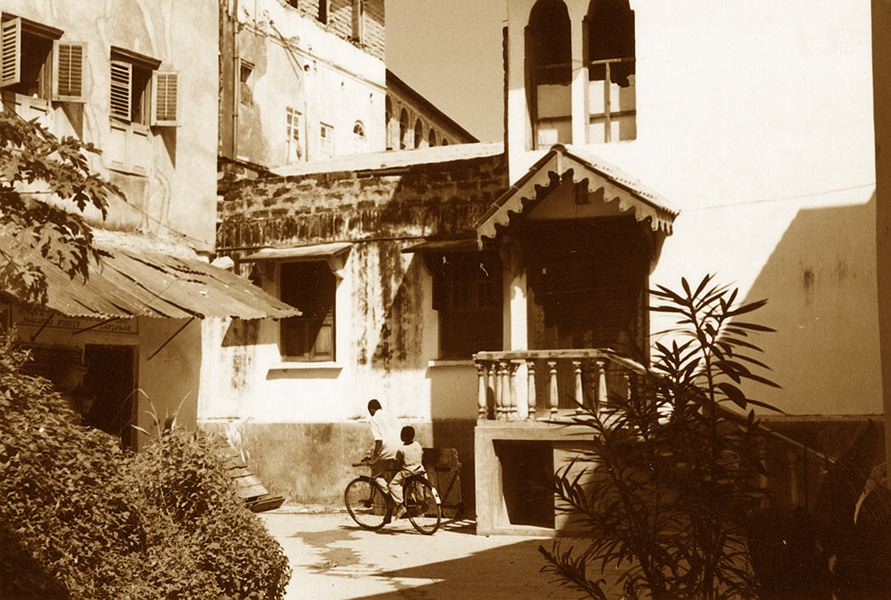
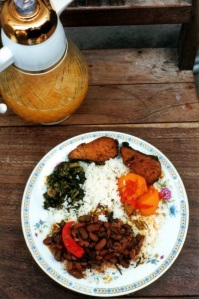
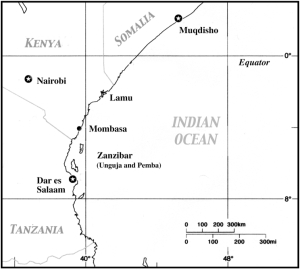
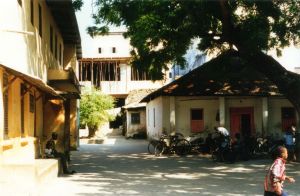
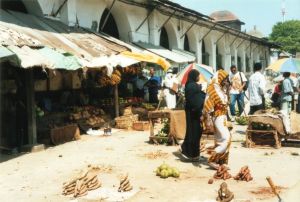
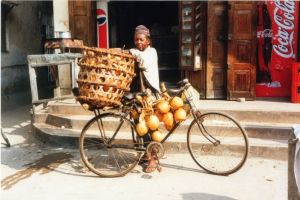

Comments are closed.